The graphical layout for a simple android.support.v4.app.FragmentTabHost never renders in either Eclipse or Android Studio.
The Console error I get is consistently:
Exception raised during rendering: No tab known for tag null
I'm using the most basic XML file:
<android.support.v4.app.FragmentTabHost
xmlns:android="http://schemas.android.com/apk/res/android"
android:id="@android:id/tabhost"
android:layout_width="match_parent"
android:layout_height="match_parent">
<LinearLayout
android:orientation="vertical"
android:layout_width="match_parent"
android:layout_height="match_parent">
<TabWidget
android:id="@android:id/tabs"
android:orientation="horizontal"
android:layout_width="match_parent"
android:layout_height="wrap_content"
android:layout_weight="0"/>
<FrameLayout
android:id="@android:id/tabcontent"
android:layout_width="0dp"
android:layout_height="0dp"
android:layout_weight="0"/>
<FrameLayout
android:id="@+id/realtabcontent"
android:layout_width="match_parent"
android:layout_height="0dp"
android:layout_weight="1"/>
</LinearLayout>
</android.support.v4.app.FragmentTabHost>
but the same error occurs.
I just wanted to add more views above or below the tab widget and frame layout.
I don't care so much about seeing the tab content; I just want to see the rest of my layout - but the problem is that NO OTHER VIEWS are rendered when a android.support.v4.app.FragmentTabHost resides in the layout.
I've read and tried to resolve the issue from the answer to this post:
Android: Tabs at the bottom with FragmentTabHost
but I don't think that that is my problem; I'm not looking to put a TabWidget on the bottom.
Every other one of my XML files opens perfectly.
The same problem occurs in Android Studio:
